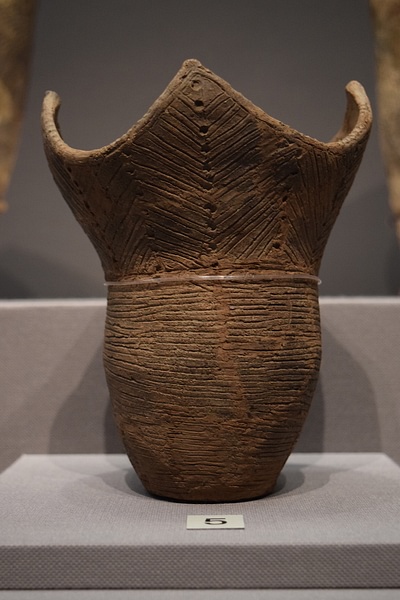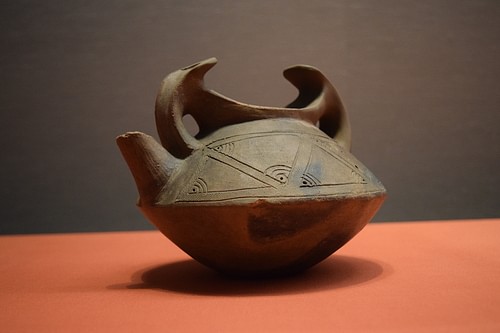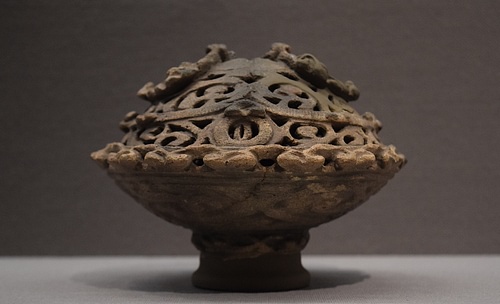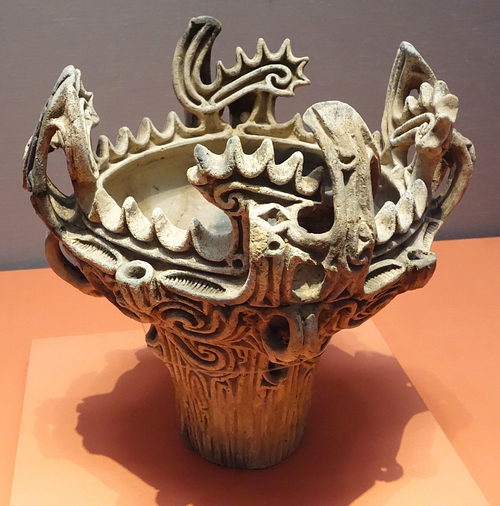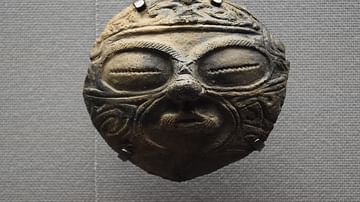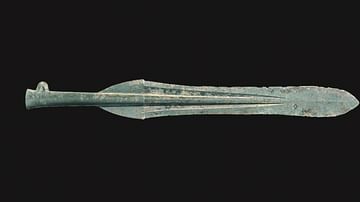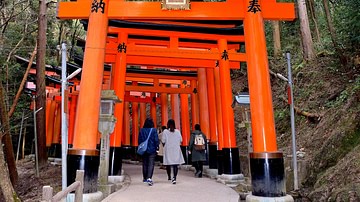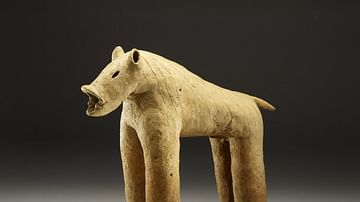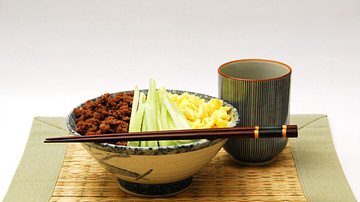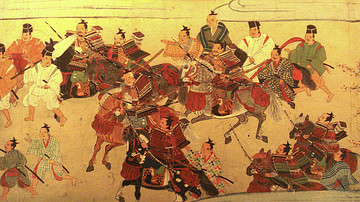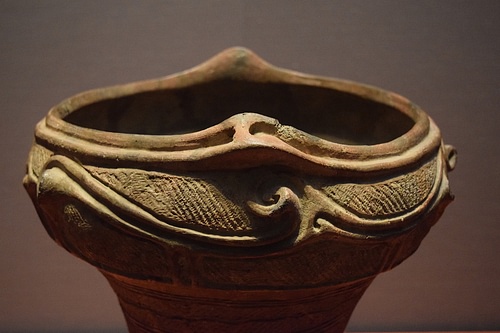
The Jomon Period (c. 14,500 - c. 300 BCE) of ancient Japan produced a distinctive pottery which distinguishes it from the earlier Paleolithic Age. Jomon Pottery vessels are the oldest in the world and their impressed decoration, which resembles rope, is the origin of the word jomon, meaning 'cord pattern'.
Jomon pottery, in the form of simple vessels, was first produced c. 13,000 BCE around Shinonouchi in Nagano, making them the oldest such examples in the world. Another early production site was Odai-Yamamoto in Aomori. Jomon pottery figurines are rather later, the oldest known example being the 'Jomon Venus' which dates to c. 5000 BCE. Two general types of pottery were produced: a dark grey kind with angular edges, curved line decoration and handles which are often shaped to resemble animal heads or vessels with a reddish colour and either no decoration at all or a few wavy or zigzag lines.
Potters were likely semi-specialists only dedicating some of their time to pottery manufacture. As kilns have not been excavated from the period it is thought that vessels were fired in open fires. There is evidence of exchange of locally produced pottery between different communities, but as such vessels are very similar, the exchange was likely of the goods stored within the vessels themselves.
Forms
Six categories of vessel shape have been identified by Japanese scholars of Jomon pottery:
- fukabachi - deep bowls (the most common type) and jars with a wide mouth, sometimes with a contracted neck.
- asabachi - shallow bowls.
- hachi - bowls of medium depth.
- sara - bowls so shallow they resemble plates.
- tsubo - vessels with a narrow mouth, sometimes with a long neck.
- chuko - vessels with spouts.
Most vessels have either a flat or rounded bottom, but later examples are predominantly made with a flat base. In addition to these broad groups are vessels which resemble lamps or incense burners which have apertures as part of the decoration and figurines. By the end of the period, there are two distinct groups into which all vessels can be categorised: plain rough wares with very little decoration (a rope impress) and fine wares with more varied decoration. Traces of fire damage and greater wear and tear indicate that rougher wares were for daily use while finer vessels, usually undamaged, were reserved for ritual use only.
Decoration
Many vessels, then, are plain, but around half have decoration of some kind, most typically lines and waves made by impressing a cord onto the wet clay before firing, hence the name jomon or 'cord pattern' for the pottery and time period of this era of Japanese history. There are some regional differences and scholars identify, in particular, chinsen-mon in the east of Japan where shells were used to incise the clay and oshigata-mon in the west where impressions were made with a dowel. Decoration becomes markedly more extravagant in the middle of the period with the so-called 'fire-flame' type (aka Umataka Kaen) from the Hokuriku region, and especially the Sasayama site in the Niigata Prefecture, where vessels are covered in applied thin rolls of clay to form lines, swirls, and crests. Towards the end of the period decoration is again minimised and in some regions disappears altogether.
Evolution
When migrants from the Asian continent began to arrive in Japan from around 400 BCE (or even earlier), they brought with them new pottery techniques, forms, and decoration. It is interesting to note that this expansion of ideas from abroad is evidenced in western Japan then displaying a much greater variation in pottery manufacture than the eastern side of the islands. The fashion for minimal decoration became widespread in western Japan, as did a distinction between glazed and unglazed wares. Jomon pottery was, consequently, gradually replaced by the finer pottery of the Yayoi Period (c. 300 BCE - c. 250 CE) which has no decoration and a reddish colour. These wares would be replaced in turn by the higher quality Sue stoneware which was introduced from Korea in the Kofun Period (c. 250 CE - 538 CE).
This content was made possible with generous support from the Great Britain Sasakawa Foundation.
